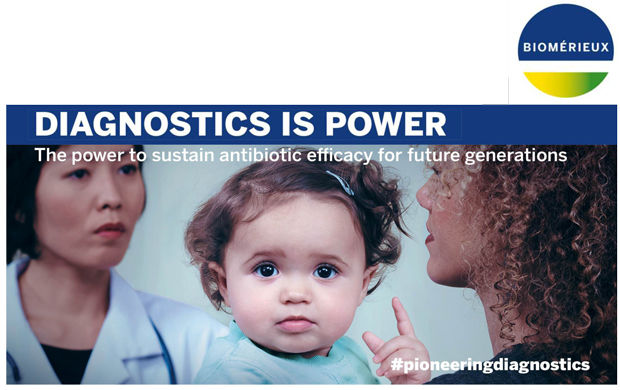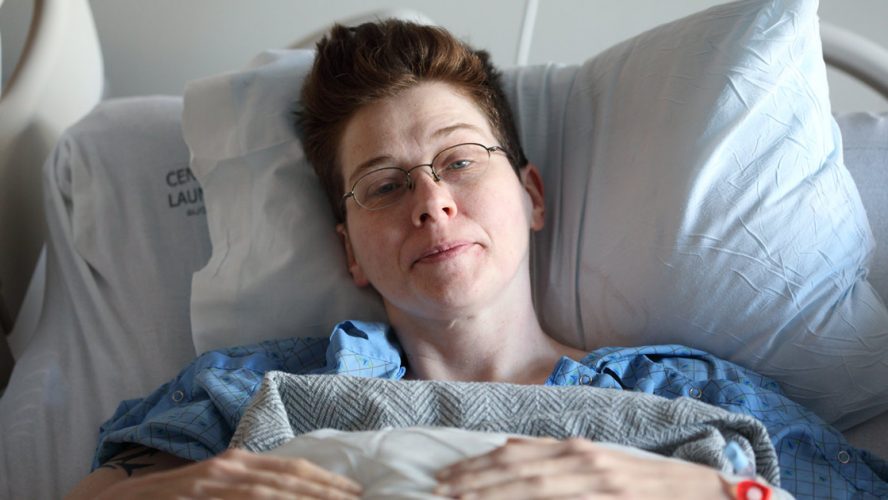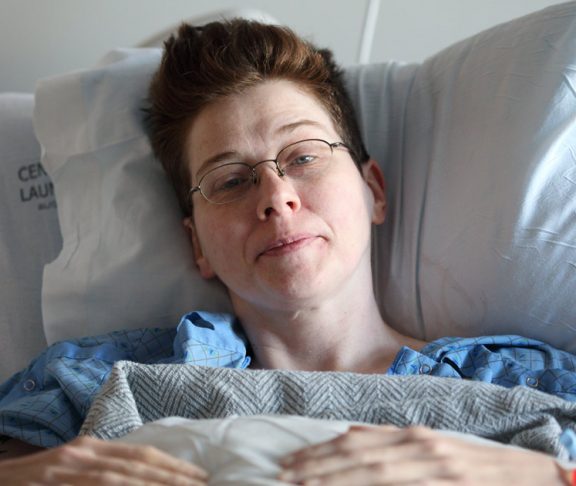Antimicrobial resistance (AMR) is probably the single biggest health threat that we face globally, with individuals dying from infections, which have become untreatable.
“If antimicrobial resistance gets out of hand, it will leave a heavy mark on the whole healthcare chain. Committed to serve public health for more than 55 years, bioMérieux believes that diagnostics have a pivotal role to play in fighting this threat,” says Mark Miller, Executive VP, Chief Medical Officer, bioMérieux.
In 2016, the UK’s O’Neill Report estimated that antimicrobial resistance would cause more than 10 million deaths and produce trillions of dollars of GDP loss by 2050, a significant under-estimate since many resistant pathogens (Acinetobacter, Pseudomonas, Salmonella, etc.) were not included in these forecasts. Unfortunately, AMR surveillance is incomplete in most of the world.
The real dangers of an increase in AMR
The rise of AMR will have dire consequences on individuals, healthcare systems and the global economy. Routine minor surgery will carry higher risks due to the possibility of a resistant infection. Elective surgeries like joint replacements will carry tremendous risks of untreatable infectious complications. The immunosuppressing treatment of cancers and leukemias would result in high rates of antibiotic-resistant deaths. Common conditions like pneumonia could become lethal to large proportions of the population once again in this “post-antibiotic era”.
How can diagnostics help in the fight against AMR?
Diagnostic tests have a key role to play in combatting AMR in three principal ways:
- They are mandatory to conduct AMR surveillance (to measure and track resistance),
- They are crucial in determining the optimal therapy for an individual, and
- They are vital for reducing inappropriate antibiotic use in an Antibiotic Stewardship programmes.
Surveillance – diagnostics enable surveillance of pathogens and resistance on a local, regional and global scale, this being instrumental to understand the extent of AMR and how to address it.
Knowing AMR epidemiology determines the actions necessary for its control. bioMérieux is the unique sponsor of the world’s largest AMR surveillance: the Global Point Prevalence Survey (GLOBAL-PPS), co-developed with the University of Antwerp (Belgium), whose aim is to measure antibiotic and diagnostics utilisation as well as resistance. In using developed, low- and middle-resource countries as participants, it seeks to improve antibiotic use and slow the emergence of AMR in participating hospitals.
Individual diagnosis – diagnostics enable the optimisation of a patient’s therapy. Antibiotics are not necessary for all infections (viral infections do not respond to antibiotics) and can result in symptomatic side effects and allergic reactions, as well as the induction of antibiotic resistance in the person’s “normal flora”. When antibiotics are necessary, diagnostic tests provide valuable information on the responsible pathogen and the choice of treatment that is most effective.
Antimicrobial Stewardship – diagnostics are key tools to effectively accomplish Antimicrobial Stewardship (the right treatment for the right patient at the right time). Stewardship programmes using diagnostic tools have achieved substantial reductions in antibiotic use in a safe and effective manner, thereby combating AMR.
Innovations in diagnostics – faster and more accurate diagnostic tests will improve AMR surveillance, help to choose the most appropriate therapy for an individual, and are pivotal in stewardship programmes. One such innovation is the “syndromic approach,” using highly multiplex nucleic acid-based tests, which quickly and efficiently test for more than 90% of the pathogens responsible for a given syndrome, providing actionable information rapidly.
Also, the use of procalcitonin (PCT), a blood biomarker indicating a bacterial infection, in suspected or confirmed pneumonia and sepsis, has significantly reduced antibiotic use in safe and effective ways. Highly automated blood culture systems and faster antibiotic susceptibility testing are other innovations resulting in more useful information given to healthcare providers.
What are the next steps?
Funding and support for diagnostic research and innovation
The development of diagnostics to address AMR is poorly funded in most countries. Aside from support for novel antibiotics and vaccines, R&D financial incentives for diagnostics will be crucial.
Assessment of medical value
Innovative diagnostics need harmonised Health Technology Assessment (HTA) methods that can be used within and between countries. The results of these HTAs should be used to derive the true medical value of a diagnostic test, facilitating adoption and reimbursement – especially true for diagnostics to combat AMR.
Reimbursement
In general, reimbursement of diagnostic tests is not based on HTAs or on the improvement in medical outcomes, despite the fact that they can contribute to better patient care, optimised outcomes, reduced costs and other measurable benefits. Reimbursement of diagnostics should be correlated with the medical value that they impart to the patient and the healthcare structure, as determined by harmonised and validated HTAs measuring AMR-specific outcomes.
Evolution of practice
The behaviour of physicians, nurses, pharmacists and infection control practitioners in the use and adoption of diagnostics is key for our success. Diagnostics are generally underused, but improved uptake can be achieved by improving their familiarity and utility among these groups, leading to better patient outcomes and a slowing of AMR growth and spread.
Education around how diagnostics can benefit AMR
Knowledge about diagnostics – availability, performance, utility and their key role in combating AMR – is mostly absent from the educational curricula of healthcare professionals. The in-depth education of these groups is essential, since they are the ones who can effect change and, in turn, educate the general public about diagnostics and AMR.
Why a combined effort is necessary?
AMR is a serious reality today, without sufficient awareness of its extent and consequences at political, social and economic levels. There is a lack of focus on the pivotal role of diagnostics in preventing and controlling global AMR. Increase understanding of this public health threat and its dire consequences needs to penetrate all levels of society to improve the situation and to protect future generations from a world without effective antibiotics.


